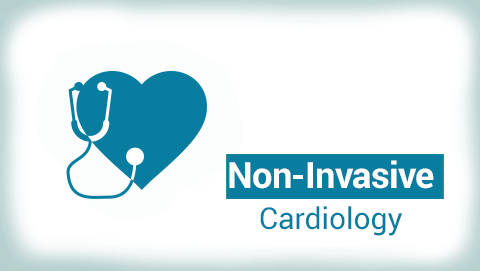ECHOCARDIOGRAPHY
Our Offerings
- Pulmonary Hypertension Clinic
- Electrocardiography (ECG or EKG)
- Cardiac biomarkers
- Echocardiography
- Transthoracic (TTE) Echocardiography
- Transesophageal echocardiogram
- Stress echocardiography
- Treadmill test
- Holter monitor (or ambulatory electrocardiography device)
- Head up Tilt table test
- Defibrillation
- CT Angiogram
- Cardiovascular magnetic resonance imaging (Cardiac MRI)
Procedure:
- M-mode echocardiogram. This, the simplest type of echocardiogram, produces an image that is similar to a tracing rather than an actual picture of heart structures. M-mode echo is useful for measuring heart structures, such as the heart`s pumping chambers, the size of the heart itself, and the thickness of the heart walls.
- Doppler echocardiogram. This Doppler technique is used to measure and assess the flow of blood through the heart`s chambers and valves. The amount of blood pumped out with each beat is a sign of how well the heart is working. Also, Doppler can detect abnormal blood flow within the heart, which can mean there is a problem with one or more of the heart`s four valves or with the heart`s walls.
- Color Doppler. Color Doppler is an enhanced form of a Doppler echocardiogram. With color Doppler, different colors are used to show the direction of blood flow.
- 2-D (two-dimensional) echocardiogram. This technique is used to see the actual structures and motion of the heart structures. A 2-D echo view looks cone-shaped on the monitor, and the real-time motion of the heart`s structures can be seen.
- 3-D (three-dimensional) echocardiogram. 3-D echo technique captures 3-D views of the heart structures with greater depth than 2-D echo. The live or “real time” images allow for a more accurate assessment of heart function by using measurements taken while the heart is beating. 3-D echo shows enhanced views of the heart`s anatomy and can be used to determine best treatment plan.
Major Indications:
This enables detailed anatomical assessment of Cardiac pathology, particularly
- Valvular defects,
- Congestive heart failure,
- Congenital heart disease,
- Aneurysm,
- Cardiomyopathies.





